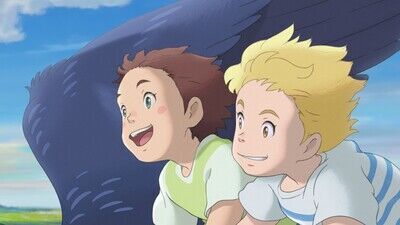Momose’s dazzlingly vibrant and heart-rending fantasy arrives on American screens mere weeks after John Krasinski’s recent live action/animation hybrid “IF” and just over a month ahead of the 20th anniversary of the Cartoon Network show “Forster’s Home for Imaginary Friends,” both fictions that navigate incredibly similar worlds of make-believe pals.
Amid shape-shifting landscapes and a starry sky, Rudger (voiced in English by Louie Rudge-Buchanan), a blond boy, introduces the realm where he and Amanda (Evie Kiszel), the young girl who conjured him up, spend time together. Though Rudger has the appearance of being Amanda’s age, he’s only been around for a few months—since the passing of the girl’s father. His presence provides Amanda with comforting support as she grapples with grief. She and Rudger have promised to protect each other and to never cry.
Produced by Studio Ponoc, the company behind “Mary and the Witch’s Flower” and staffed with several Studio Ghibli-trained artists, the animation exhibits a ravishing fluidity, particularly in magical locations where items on screen transform rapidly to keep up with the kid’s visions. Momose himself worked in the animation department of bona fide masterpieces such as “Grave of the Fireflies,” “Princess Mononoke,” and “Spirited Away.” His experience under Hayao Miyazaki and Isao Takahata reflects here in both the poignant, yet not cloying treatment of the material and the warm aesthetic on display.
Certain elements and effects, such as a flock of origami birds, make the use of digital technologies to complement the mostly hand-drawn characters obvious. Yet, the exquisitely detailed backgrounds in Amanda’s home, which doubles as a bookstore, and later in the parallel universe where imaginary friends dwell, showcase the caliber of artistry here. A single frame of “The Imaginary” can outshine the mass-produced, visually uninspired animation in some of the American offers targeting the same demographic.

